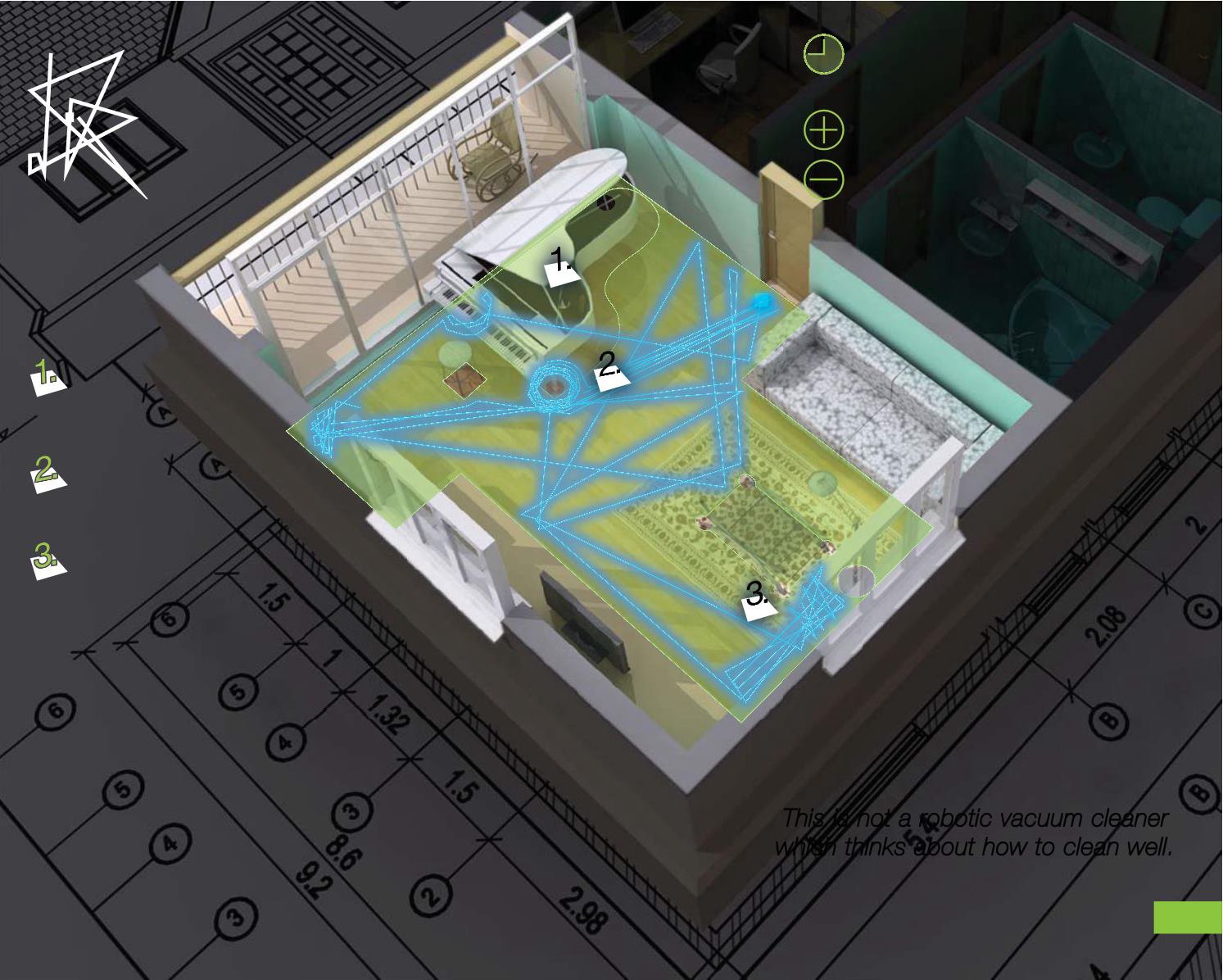
Random
cleaning
system
46 min.
cleaning completed
longer cleaning time
it leaves entire surfaces uncleaned
frequent cycling in one place
ineffective cleaning
it can visit certain places several times
Random movement is not control-
led by any form of artificial intelli-
gence. Whether or not it cleans
more difficult-to reach places is a
question of chance, which is often
not favourable.
This form of movement frequently
results in cycling, where the system
cannot rationally direct the robot
out from the corner of a room, from
under a table etc.
Without the requisite movement
logic, the system can direct the
robot into cramped spaces at
random, where it cycles until the
battery is completely flat. Random
movement has no form of strategy
for getting out of such a situation.
This is not a robotic vacuum cleaner
which thinks about how to clean well.
A very
curious way
of cleaning is offered by a random cleaning.
The angle
of rebound from the obstacle determines the direction of travel.
You
only have to set the time, and the robot will start
wandering
through the room
for the preset time. However, it is highly unlikely that it will achieve any interesting
results. Then it isn’t really a robotic vacuum cleaner, which evaluates each square milli-
metre in the pursuit of only one goal. Clean surface.
These vacuum cleaners are very specific. Usually one model is marked with different
labels. To identify it from the robotic vacuum cleaner is a question of a moment.
It gives
itself away by lower price, and rather flimsy construction.
Such devices will never
be able to compete with the company iRobot due to the fact that not enough attention is
given to the quality, a satisfied customer and the efficiency of the product.
Getting out
of you as much money as possible is the sole purpose of such exercise
.
Random cleaning
i
i
i
l
i
i
l
ll
15


